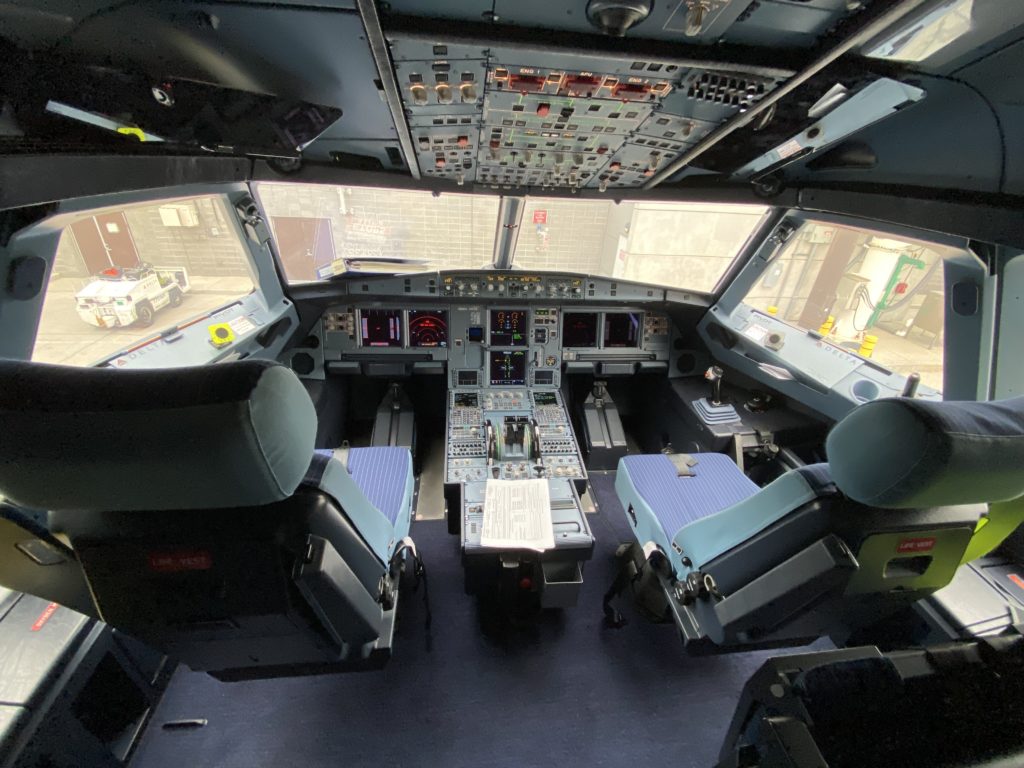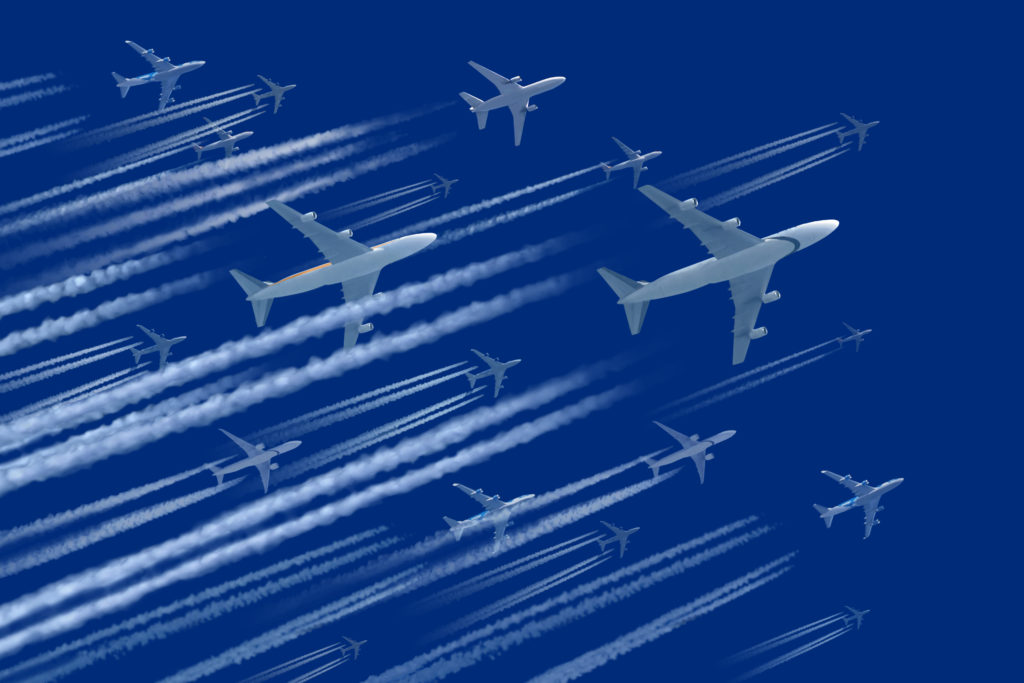Advertiser Disclosure: Eye of the Flyer, a division of Chatterbox Entertainment, Inc., is part of an affiliate sales network and and may earn compensation when a customer clicks on a link, when an application is approved, or when an account is opened. This relationship may impact how and where links appear on this site. This site does not include all financial companies or all available financial offers. Opinions, reviews, analyses & recommendations are the author’s alone, and have not been reviewed, endorsed, or approved by any of these entities. Some links on this page are affiliate or referral links. We may receive a commission or referral bonus for purchases or successful applications made during shopping sessions or signups initiated from clicking those links.
In the complex world of airline operations, a key term you might encounter, especially around contract negotiation time, is “scope clause.” But what exactly is it?
An airline scope clause is essentially a provision within a pilot union contract with a major airline. It limits the size and capacity of aircraft that regional airlines, operating under the major airline’s brand (often called “codeshare flights”), can fly. There are typically two main restrictions:
- Passenger Capacity: This sets a maximum number of passengers a regional jet can carry. Most of the contracts that I know of limit the maximum number of passengers that can be carried between 50 and 76 passengers.
- Aircraft Size: Usually the contact defines this as the maximum takeoff weight of the aircraft. This prevents larger jets from entering regional fleets with smaller seat capacities.
- Total Number of Jets: Some contracts also may define the maximum number of regional jets that can be operated, and is usually defined as a percentage of the main airline’s fleet.

Example Scope Clauses
For the three legacy carriers (American, Delta, and United), their pilot union contracts all echo basically the same limits. While it’s unimportant here to define what each airline has under their scope clause, they all follow the same principal. Most of them will define the maximum number of seats, how many aircraft can be in the fleet, and the maximum takeoff weight of the aircraft.
Depending on the union contract, they use a combination of the previously mentioned limits to define their scope clause.
The Impact of Scope Clauses
Scope clauses have a significant impact on various stakeholders within the airline industry. And depending on where you land on the matter, there’s always a winner and someone complaining about it.
- Mainline Pilots: For pilot unions, scope clauses are a key provision that protects higher-paying mainline pilot jobs from being outsourced to regional airlines with lower pilot compensation. This is also used as a bargaining chip to keep the prestige of the job. However, I have seen my fair share of mainline pilots complain about operating shorter regional routes.
- Regional Pilots: Scope clauses can create a clearer path for regional pilots to eventually transition to mainline positions. By limiting the growth of regional airlines’ fleets with larger aircraft, mainline airlines are more likely to need to expand their own fleets to meet demand. This creates opportunities for regional pilots to gain experience on smaller jets and eventually move up to flying larger mainline aircraft. However, it means that there is a vast quality of life difference between regional and mainline pilots.
- Passengers: Scope clauses can restrict airlines from offering a wider variety of aircraft on certain routes. This could mean fewer options for passengers who might prefer a larger jet with more amenities like in-flight entertainment or extra legroom. For passengers on shorter routes served by regional airlines, this could make a significant difference in comfort. With limits placed on the distance a regional jet can go, shorter routes are almost always reserved for regional jets.
- Regional Airlines: Restrictions on aircraft size can limit the efficiency and profitability of regional airlines. Smaller regional jets may have higher operating costs per passenger compared to larger mainline aircraft. This can make it more expensive for regional airlines to serve smaller markets, potentially impacting ticket prices for those routes and limiting service options for those communities. This is why in years fuel costs are high, smaller regional routes are the first to go.
- Fleet Innovation: Scope clauses can also stifle innovation in the regional jet market. With limitations on the size and capabilities of aircraft they can operate, regional airlines may have less incentive to invest in newer, more fuel-efficient models. This could have a negative impact on the environmental footprint of the airline industry. For example, the newer Embraer E175-E2 is too heavy to be within the scope limits for regional aircraft, so no US carrier has ordered it and is using the less fuel-efficient previous generation.

The Ongoing Debate
Airline scope clauses are a contentious topic within the industry. While they protect unionized pilots’ jobs and can create a clearer career path for some pilots, they can also limit competition, raise costs for regional airlines, and restrict consumer choice. Finding the right balance between these competing interests remains a challenge in the ever-evolving world of airline travel. As the industry continues to develop, policymakers, airlines, and pilot unions will likely need to work together to find solutions that ensure the long-term sustainability of the regional airline sector while also considering the needs of passengers and the overall health of the airline industry.
The next big debate is on the horizon, with airplane makers creating more fuel-efficient airplanes that are slightly too heavy. The most prominent currently is the next generation Embraer E175, the new version can carry the same amount of passengers but has larger, more fuel efficient engines. The weight of these engines put it over most scope clause takeoff weight limitations, and pilot unions have dug their heels in to allowing airlines to operate this aircraft. Instead, forcing airlines to keep around the older and less fuel efficient first generation aircraft with no path for continuing innovation.
Looking Ahead
The future of scope clauses remains uncertain. Consolidation among major airlines could lead to pressure to relax or eliminate them altogether. On the other hand, pilot unions are likely to continue to fight for strong scope clause protections. Technological advancements in smaller, more efficient aircraft could also play a role in how scope clauses evolve in the years to come. With most major airlines investing in smaller 8 to 10 passengers unpiloted electric aircraft, scope clause could see an evolution when they come to mass market. Until then, we will see how it continues to play out in the regional airline industry.
Advertiser Disclosure: Eye of the Flyer, a division of Chatterbox Entertainment, Inc., is part of an affiliate sales network and and may earn compensation when a customer clicks on a link, when an application is approved, or when an account is opened. This relationship may impact how and where links appear on this site. This site does not include all financial companies or all available financial offers. Opinions, reviews, analyses & recommendations are the author’s alone, and have not been reviewed, endorsed, or approved by any of these entities. Some links on this page are affiliate or referral links. We may receive a commission or referral bonus for purchases or successful applications made during shopping sessions or signups initiated from clicking those links.












“With most major airlines investing in smaller 8 to 10 passengers unpiloted electric aircraft”
So most (presumably domestic here) airlines are investing in flying passengers on drones? I thought that aircraft manufacturers were the ones investing in cutting edge aviation technology rather than American or Southwest.
Actually, many airlines have invested in these electric aircraft. Delta has a stake in Joby. United and Boeing have contributed to Wisk. American has invested in Vertical Aerospace.